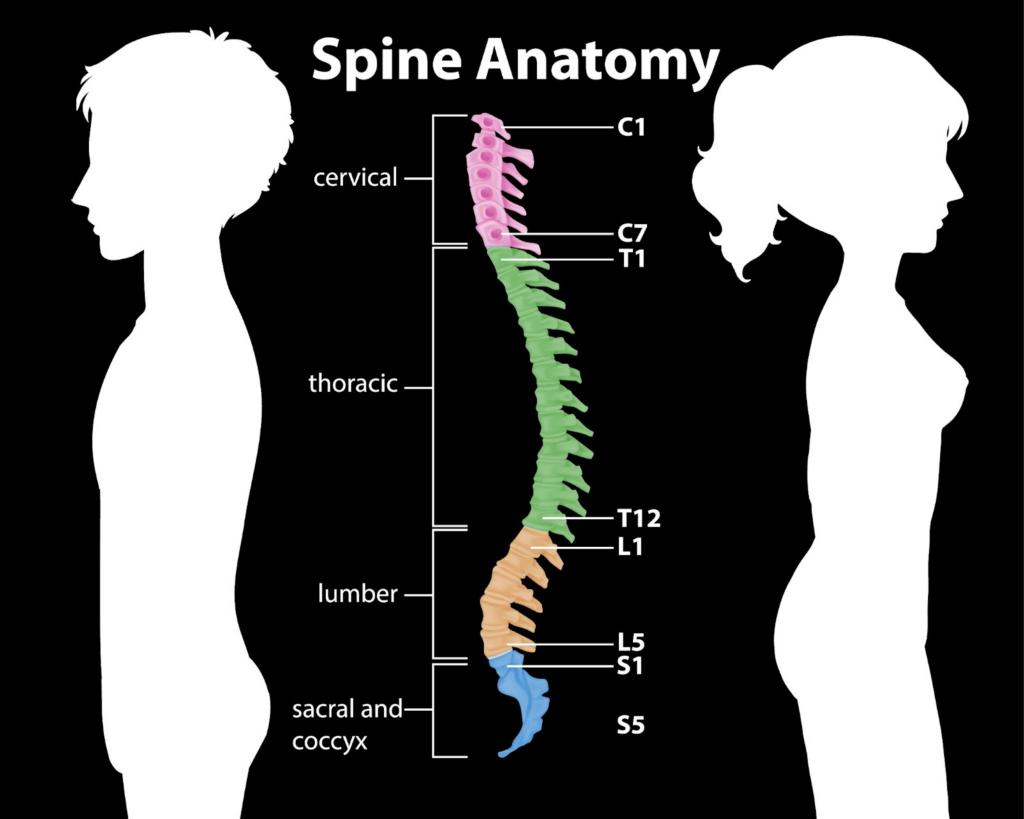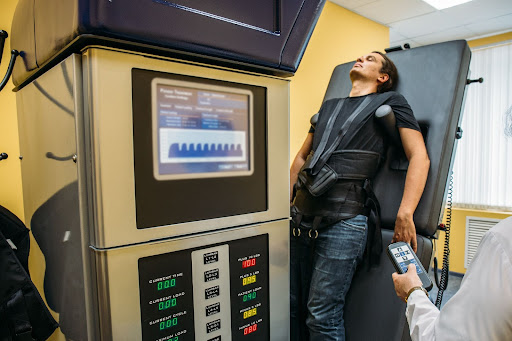Have you been struggling with chronic back pain? Have you tried multiple therapies, but none seem to offer any relief? You might want to consider spinal decompression therapy. Spinal decompression is a non-surgical therapy that is designed to alleviate back pain and other related symptoms. This treatment has gained popularity over the years, and many people have reported experiencing significant benefits from the therapy.
Spinal decompression can be used to treat a variety of conditions, including herniated discs, sciatica, degenerative disc disease, spinal stenosis, and facet joint syndrome. It is often used as an alternative to surgery or as a complementary therapy to other treatments, such as chiropractic care, physical therapy, and acupuncture.
Spinal decompression therapy is generally safe and well-tolerated, but it is important to discuss the risks and benefits with a qualified healthcare provider before starting treatment. It may not be appropriate for everyone, particularly those with certain medical conditions or who have had spinal surgery in the past.
What is Spinal Decompression?
Spinal decompression therapy is a non-invasive treatment that is designed to alleviate back pain and other related symptoms. The therapy involves the use of a specialized table that gently stretches and decompresses the spine. The stretching action creates negative pressure within the discs of the spine, which can help alleviate pressure on nerves and reduce pain.
There are two types of spinal decompression therapy: surgical and non-surgical. Surgical spinal decompression is an invasive procedure that involves removing a portion of the vertebrae to alleviate pressure on the spinal cord. Non-surgical spinal decompression, on the other hand, is a non-invasive treatment that uses a specialized table to stretch and decompress the spine.
Spinal decompression can be performed using a variety of techniques, including:
Mechanical Traction – This technique uses a machine to apply a pulling force to the spine. The patient lies on a table that can be adjusted to provide the correct angle and force. The machine then pulls on the spine, creating negative pressure within the discs.
Inversion Therapy – Inversion therapy involves hanging upside down or at an angle to decompress the spine. This can be done using an inversion table or other equipment.
Manual Techniques – Manual techniques, such as chiropractic adjustments, can also be used to decompress the spine. The chiropractor will use their hands to manipulate the spine, adjusting the alignment and creating space between the vertebrae.
What are the Benefits of Spinal Decompression Therapy in West Fargo
Spinal decompression therapy offers a range of benefits for those suffering from back pain and related symptoms. Some of the most significant benefits of this therapy include the following:
- Pain Relief: Spinal decompression therapy can help alleviate chronic back pain by decompressing the spine and reducing pressure on nerves.
- Improved Mobility: By reducing pain and increasing the range of motion, spinal decompression therapy can improve mobility and allow patients to engage in activities that they were previously unable to do.
- Reduced Need for Medication: Spinal decompression therapy can reduce the need for medication to manage pain, allowing patients to avoid potential side effects and long-term complications associated with pain medication.
- Improved Quality of Life: By reducing pain and improving mobility, spinal decompression therapy can significantly improve a patient’s overall quality of life.
- Non-Invasive: Spinal decompression therapy is a non-invasive treatment option, meaning that there is no need for anesthesia or other types of medication.
Does Spinal Decompression in West Fargo Help the Spine?
Yes, spinal decompression therapy can help alleviate back pain and other associated symptoms by promoting the healing process in the spine. The negative pressure created during decompression therapy can help to relieve pressure on the spinal discs, joints, and nerves, reducing inflammation and allowing for improved circulation of vital nutrients and oxygen.
Decompression therapy can also help to realign the spine, improve posture, reduce muscle tension, and reduce pressure on the nerves. Additionally, the increased circulation of nutrients and oxygen can help to promote tissue repair and regeneration, leading to improved overall spinal health.

Conditions Treated with Spinal Decompression
Spinal decompression therapy at Optimal Chiropractic in West Fargo can be used to treat a variety of conditions that cause back pain. Here are some of the most common conditions treated with spinal decompression therapy:
Herniated or Bulging Discs
Spinal decompression therapy can be an effective treatment for herniated or bulging discs, which occur when the outer layer of the spinal disc ruptures, causing the inner disc material to leak out. This can lead to pressure on the nerves, causing pain, numbness, or weakness in the back, legs, or arms. Spinal decompression therapy can help to reduce pressure on the disc, allowing it to heal and reducing stress on the nerves.
Sciatica
Sciatica is a condition that occurs when the sciatic nerve, which runs from the lower back down to the legs, becomes compressed or irritated. This can cause pain, numbness, or tingling in the legs or feet. Spinal decompression therapy can help to relieve pressure on the sciatic nerve, reducing associated symptoms.
Degenerative Disc Disease
Degenerative disc disease is a condition that occurs when the discs between the vertebrae in the spine begin to break down, leading to pain, stiffness, and limited mobility. Spinal decompression therapy can help to promote the healing of the discs, reducing pain and stiffness.
Spinal Stenosis
Spinal stenosis is a condition that occurs when the spinal canal narrows, putting pressure on the spinal cord and nerves. This can cause pain, numbness, or weakness in the legs or arms. Spinal decompression therapy can help to alleviate pressure on the spinal cord and nerves, reducing associated symptoms.
Facet Joint Syndrome
Facet joint syndrome is a condition that occurs when the joints between the vertebrae in the spine become inflamed, causing pain and stiffness. Spinal decompression therapy can help to reduce pressure on the joints, reducing inflammation and associated symptoms.
How Many Sessions of Spinal Decompression Are Recommended?
The number of times you should do spinal decompression depends on your individual needs and the severity of your spinal condition. Some patients may experience relief after just a few sessions, while others may require multiple sessions to achieve the desired results. Your doctor or therapist will be able to recommend the appropriate number of sessions based on your condition and the results of your initial evaluation.
Typically, patients will start with several sessions per week for a few weeks, then gradually reduce the frequency of sessions as they begin to experience relief. Depending on the severity of the condition, patients may require maintenance sessions every few months to maintain the results of the therapy.
It is important to follow your doctor or therapist’s recommendations when it comes to the number of sessions you should have. Overdoing it can lead to additional strain on the spine, which can be counterproductive to the therapy.
What to Do After Spinal Decompression Therapy?
After spinal decompression therapy, it is important to take steps to allow your spine to rest and heal. Here are some things you can do after spinal decompression therapy in West Fargo:
- Rest and Recovery
After spinal decompression therapy, it is important to rest and allow your spine to recover. Avoid any activities that could cause further stress on your spine. Your healthcare provider may recommend limiting activities such as heavy lifting, twisting, or bending for a certain period of time.
- Follow Recommendations
Make sure to follow the recommendations of your healthcare provider after spinal decompression therapy. They may recommend certain exercises or stretches to help improve your flexibility and range of motion. It is important to follow these recommendations to promote healing and avoid future injuries.
- Maintain Good Posture
Maintaining good posture is essential to avoid putting unnecessary stress on your spine. Make sure to sit and stand up straight, avoid slouching or hunching over, and use proper body mechanics when lifting or carrying objects.
- Consider Additional Treatments
In some cases, your healthcare provider may recommend additional treatments or therapies to support your spine and prevent future injuries. This may include physical therapy, massage therapy, or chiropractic care. Make sure to discuss these options with your healthcare provider to determine the best course of action for your specific condition.
- Monitor Your Symptoms
Keep track of any changes in your symptoms after spinal decompression therapy. If you experience any new or worsening symptoms, make sure to contact your healthcare provider right away.
Spinal Decompression Therapy in West Fargo
Spinal decompression therapy at Optimal Chiropractic in West Fargo has been a popular and effective treatment option for those suffering from various spinal conditions. Patients in West Fargo have access to experienced chiropractors who offer this therapy to relieve their pain and discomfort.
While it may not be a one-size-fits-all solution for everyone, Spinal Decompression Therapy can be an excellent alternative to more invasive procedures such as surgery. It has a high success rate and can provide long-lasting relief from chronic back pain. If you are struggling with back pain or a spinal condition, it is always important to consult with a qualified healthcare professional to determine the best course of treatment for you.




